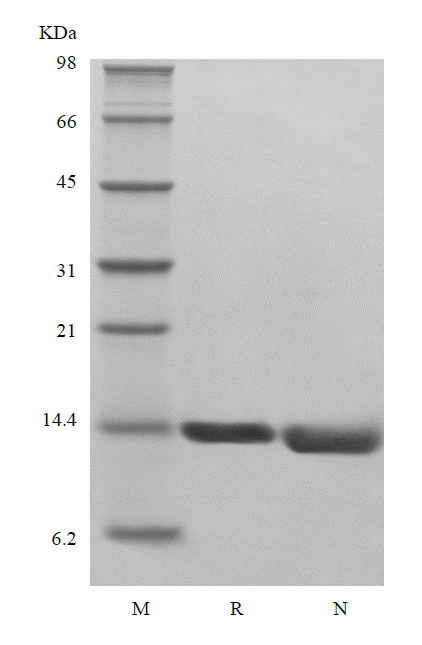Migration Inhibitory Factor (MIF) is a secreted protein without a cleavable signal sequence and is secreted via a specialized, nonclassicalpathway. It is secreted by macrophages upon stimulation by bacterial lipopolysaccharide (LPS), or by M.tuberculosis antigens. MIF consists of two α-helices and six β-strands, four of which form a β-sheet. The two remaining β-strands interact with other MIF molecules, creating a trimer. Structure-function studies suggest MIF is bifunctional with segregated topology.The N- and C-termini mediate enzyme activity (in theory). Phenylpyruvate tautomerase activity (enol-to-keto) has been demonstrated and is dependent upon Pro at position 1. Amino acids 50-65(a.a.) have also been suggested to contain thiol-protein oxidoreductase activity. MIF has proinflammatory cytokine activity centered around 49 - 65(a.a.). On fibroblasts, MIF induces, IL-1, IL-8 and MMP expression; on macrophages, MIF stimulates NO production and TNF-α release folllowing IFN-γ activation. MIF apparently acts through CD74 and CD44, likely in some form of trimeric interaction. Human MIF is active on mouse cells. Human MIF is 90 %, 94 %, 95 %, and 90 % a.a. identical to mouse, bovine, porcine and rat MIF, respectively.

